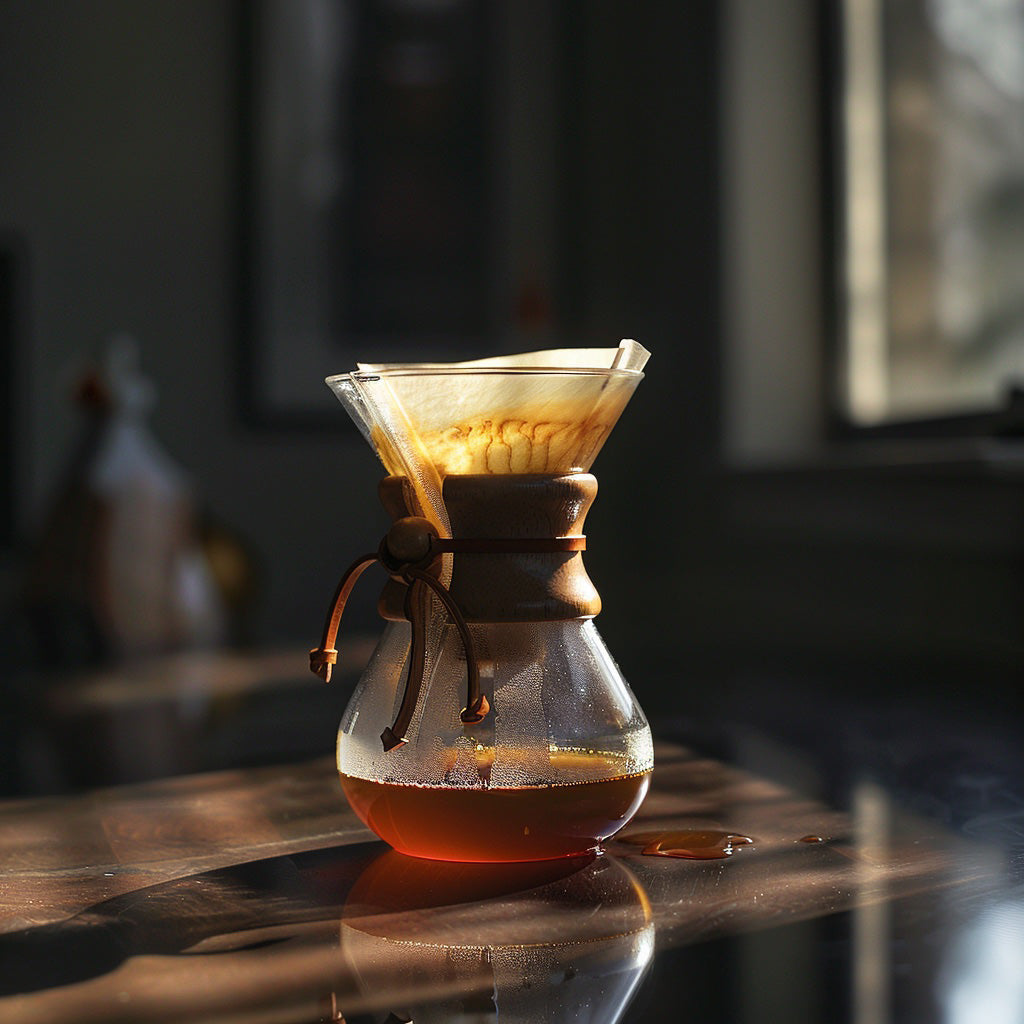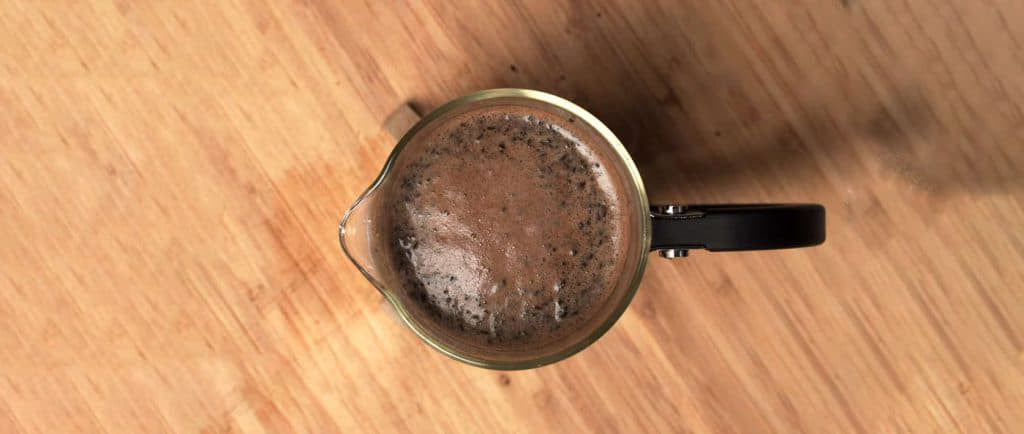Guide
Overview
Coffee is scored on a 100-point scoring system. Coffee scoring above 80 points is considered 'very good' coffee (how good it tastes) and by origin (traceability). We would like to add a third criteria for coffee - namely the actual taste when served in the cup as the taste can be lessened during storage, roast, brewing, etc.
Our uncompromising approach singlehandedly sets the bar for re-defining the respect and evaluation of high-end coffee by using competition grading environments. The process is very labor intensive and time consuming, yet the experience is surpassing the set standards - and a receipt for you as a customer to expect nothing else than the best.
We evaluate the coffee as roasted beans and primarily with SCA's WBrC score sheet, namely Aroma, Flavor, Aftertaste, Acidity, Body, Balance and specific intensities where applicable in each category. Aroma is evaluated as both dry and wet.
World class evaluation process
The tasting notes are evaluated by an international team currently managed by Ivica Cvetanovski and Storm Lunde. Over the years, it has been of a rotating nature with members comprising among others Thore-Andre Thorsen, Rubens Gardelli, Veronika Galova Vesela, Alexander Nagy, et al. Everyone holds all high international and professional skills regarding coffee knowledge and merit.
The validation and scoring of the coffee undergoes, among other things, a conventional cupping and brewing according to our “1:1:1” (One) method for the V60 which was developed for the 2017 WBrC in Budapest. Evaluation is done in accordance with WCE's WBrC score sheet. The taste notes are recorded in all categories (Aroma, Flavor, Aftertaste, Acidity, Body and Balance). The 2 or 3 most common and identified taste notes from each member in the summation of each category are those found on the label of the coffee bag.
Water
Understand TDS, General Hardness (GH), pH (potential Hydrogen), alkalinity and Carbonate Hardness/Buffer and how it affects your coffee.
Time impacting on roast
| 0-3 days | Focused acidity |
| 4-7 days | Optimal Coffea Circulor recommended praxis |
| 8-14 days | Increased floral perception |
| 15-21 days | Increased sweetness |
| 22+ days | Increased balance |
| 1+ month | Intact sweetness, peak intensity |
| 2+ months | Inherent balance, possible reduced florals turning herbal |
Recommendations
Please store in a cool and dry place in order to secure freshness and quality. To ensure best possible experience use within 3 months after roast date and 2 weeks after opening. In various environments and setups, your brewing experience can benefit from opening the bag and closing it. Wait one day to brew. We have invested significant time to research the durability of the coffee by actively refining our roasting algorithms to ensure perpetual quality post 3 months of production. Our flavor-lock packaging technology is based on processing and roasting. This ensures persisting and stable aromas, flavors and pro-experience.
Regarding the “resting time” for the coffees, you can actually go ahead and cup, brew, infuse at once. Since the coffees might be traveling over national and international borders over one to a couple of days, the "resting" occurs naturally.
Additionally, the roasting algorithms has taken this into account. They are developed for longevity. Also, when you decide to open a bag, you can go ahead and access the aroma and if you don't decide to prepare a coffee directly, this can be in favor for the flavor development by waiting 1 days after opening the bag.
Our customers use various "resting times"/schedules that are highly personal or to suit particular needs. We, ourselves, brew directly while others can wait everything ranging from 1-21+ days.
For espresso-specific roasts, we recommend a resting period of 10 days after specified roasting date.
Start using at will. Brew immediately or wait several weeks. Prepare for a championship with a strategy. It all depends on your goals.
We recommend using the coffees by first opening the container/bag one day before the first planned brew to enable a natural aeration of the coffees. Use according to the following matrix and remember these are general observations given parameters such as continent, country, region, variety, altitude, process, etc. combined with Coffea Circulor processing and roasting algorithms.
Plan your acquisition according to production schedules (roasting), event attendance (home/championship) and shipping priority (standard/courier).
Our (current) packaging is a conventional stand-up pouch, yet with a slightly modified design incorporating a resealable zip lock. Once the contents is emptied it can be reused and repurposed to be filled with other coffee beans, cascara, dried fruits, candy, and so on. The package is (usually) not intended to use any liquids.
"Typical" coffee retail/storage bags (might) might have a so called "one way valve / air vent / air hold". The function of these "valves" is to expel various gases. Although stated that these are working in a "one way"-direction, our findings showcase a bi-directional way, meaning they can just as much also enable air to flow in rather than only out. Consequently, this is also is altering the pressurized environment for the roasted beans. Although valves are claimed to be of the "one way pass"-principle, judging by various manufacturers, design and cost efficiency, valves can be low grade, "cheap production", and cause more harm than intended. Subsequently, if we would opt to at any point in time use these "valves', we would still not be 100% confident they are "one way", expelling.
Hence, the decision to develop roasting algorithms to suit specific coffees by origin, production methodologies/fermentations, drying and storage, is also incorporating the fact that Coffea Circulor uses these non-valve-based storage bags.
Coffee containers such as bags of any kind come in various shapes and sizes. Since Coffea Circulor's first days of coffee roasting, circa 2008, we have had the understanding that creating a natural environment of for the roasted coffee beans is crucial to its quality, longevity and sensory experience. Additionally, coffee is organic matter, it attracts aromatics due to its porous nature, meaning also the gases it expels also contributes to it re-absorbing these, contributing to its flavor development. Throughout the years, Coffea Circulor has performed significant tests, many through trial and error, with various packaging solutions, ranging from 'bags' to cylinders in various shapes and forms. We have always returned to a "conventional bag" being able to carry out its primary function, namely preserving the natural environment of the coffee beans at an optimal level without being side-tracked by shape, form or disturbing its natural environment. Additionally, some packaging methods are also using less storage space during transport, which is important for financial purposes to also be in favor of customers. Technically and practically, we could/can chose to have different packages, yet we are not fully confident that customers are willing to pay more for the same product because of "luxurious wrapping".
Non-valve solutions, when still in its natural, unopened environment and when potentially exposed to fluctuating temperatures, also have a tendency to fair better in respect to longevity. This is an area of specific interest of Coffea Circulor and is constantly researched in respect to the origin of the coffee (country, region) and fermentation methods.
Solutions with "valves" are not guaranteed to be "one way". They create a "back draft", meaning air is also drawn into the bags, disturbing the natural environment, particularly in pressurized environments such as cargo bays in for example during flight. The valveless solution is also in favor of predictability since various factors can be ruled out in reference to transport, storage and longevity. Testing, not only ourselves but also customers, have systematically found that the longevity of the coffees are much more in favor rather than pro valve-based solutions. The valveless solution also allow the coffee to retain a certain state of being under pressure and not be altered as pressure can fluctuate with a valve-based solution, such as for example when a coffee bag changes environments as in entering different altitudes during transport. (Compare to a water bottle in a flight cabin as it "implodes" during its flight.)
Kindly also observe that valve-based solutions are from a time where coffee was roasted more aggressively and would (possibly) require a solution that could counteract the build up of gases. In other words, it could make more sense to use "valve-based-bags" for more "aggressive" espresso roasts/coffees.
In effect, our chosen packaging could possibly "expand" due to all of the presented details. The coffees that enter these kind of bags also undergo a different roasting procedure to ensure a slower development of the de-gas timings. The effect of this does not compromise quality, longevity or the sensory experience. The presentation might come across different from other retail coffee bags from other producers/suppliers. We do not have any statistics at hand in respect to how many actors on the market prefer valve versus valve-less solutions at this time of writing (2018). We do know and acknowledge that this has been Coffea Circulor's de-facto standard and that we (might) be/have been alone preferring this method of storage. In reference, kindly know that if 99% of the an industry uses a particular method it becomes "standard" and the remaining 1% (could) be questioned why. Something that comes off as being "non-standard" does not automatically mean it is "bad".
Unopened bags
Open the sealed coffee bag/container gracefully, let the contents aerate for a few seconds, re-seal the bag one day prior to your first brew. This will enable the coffee beans to adjust to their environment after being in storage/transport.
Opened bags
Re-seal the bag while "squeezing" and sealing with the bag with the built in seal also disengaging any unnecessary air in the bag, i.e. keep the bag away from a potential "balloon"-state after opening it for the first time.
When opened, use your coffee within "reasonable" time.








